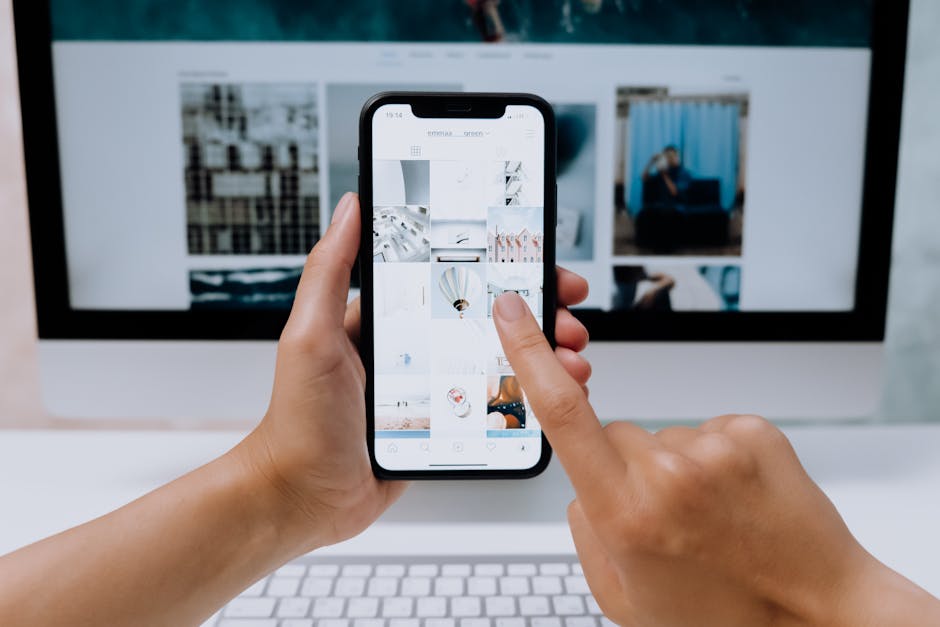Leveraging MVP Development For Your Fitness App
Are you ready to take your fitness app to new heights? Strap on your running shoes and get ready to dive into the world of MVP development.
Just like a well-crafted workout plan, leveraging MVP (Minimum Viable Product) development for your fitness app can help you achieve optimal results.
MVP development is like the foundation of a strong physique – it provides a solid framework for building and refining your app. By focussing on the core features and functionalities that are essential to your users, you can create an app that delivers maximum value from day one.
In this article, we’ll explore the benefits of MVP development for fitness apps. We’ll discuss how validating your app idea with an MVP can save you time and resources while gathering valuable user feedback for continuous improvement. We’ll also delve into how leveraging MVP can minimise risks and costs, allowing you to take your fitness app to the next level.
So grab your water bottle and let’s get started on this exciting journey towards success!
Key Takeaways
- MVP development allows for the creation of a basic version of your fitness app with essential features.
- Gathering user feedback during the MVP stage enables continuous improvement and refinement of the product.
- Starting with a scaled-down version of the app minimises risks and reduces costs, while also providing valuable insights into user preferences.
- Enhancing user experience through personalised workouts, social integration, gamification elements, and customisable interfaces leads to increased engagement and satisfaction.
Understanding MVP Development

You’ll luv how quickly you can understand MVP development and start implementing it into your fitness app!
MVP development, which stands for Minimum Viable Product, is a process that allows you to create a basic version of your app with essential features. This approach helps you gather user feedback early on and make necessary improvements before investing significant time and resources into the complete product.
The MVP development process consists of several stages. First, you identify the core functionality of your fitness app that solves a specific problem or meets a particular need. This could include features like workout tracking, meal planning, or progress monitoring.
Next, you design and develop the minimum set of features required to demonstrate your app’s value proposition. These features should be simple yet functional enough for users to experience the benefits.
After creating the initial version of your fitness app, it’s crucial to gather feedback from early adopters and beta testers. This feedback will help you identify any useability issues, bugs, or missing features that need improvement. In this stage, it’s essential to have open lines of communication with users so they can provide valuable insights regarding their experience using the MVP.
By leveraging MVP development for your fitness app, you can reap several benefits. It allows you to launch your product faster by focussing on its core functionalities first instead of trying to build everything at once. Additionally, gathering user feedback early on helps ensure that future iterations meet user expectations and address their pain points effectively.
Transitioning into the subsequent section about the benefits of MVP development for fitness apps, incorporating these keywords naturally without explicitly stating ‘step’ enables an effortless flow in understanding why utilising MVP development is advantageous for your fitness app’s success.
Benefits of MVP Development for Fitness Apps

Can’t imagine the advantages of starting with a minimal version for your fitness app? Well, let me enlighten you on the benefits of MVP development for fitness apps. By following the MVP development process, you can save time and resources by focussing only on the essential features needed to launch your app. This allows you to quickly get your product into the hands of users and receive feedback that will guide future development.
To illustrate these advantages, let’s take a look at a table comparing traditional app development with MVP development:
| Traditional App Development | MVP Development |
|---|---|
| Lengthy development cycle | Quick iteration |
| High development costs | Cost-effective |
| High risk of failure | Risk mitigation |
| No user validation | User feedback |
| Full-featured product | Minimum viable product |
As you can see, using an MVP approach helps mitigate risks by allowing you to test your fitness app idea in the market before investing heavily in its full development. It also ensures cost-effectiveness as you focus only on developing core functionalities initially. Additionally, by incorporating user feedback early on, you can refine and enhance your app based on real user needs and preferences.
Now that we’ve explored the advantages of MVP development for fitness apps, let’s dive into how it can help validate your app idea without wasting valuable time or resources.
Validating Your App Idaea with MVP

To validate your app idea effectively, start by creating a minimal version that focuses on essential features and allows for quick iteration and user feedback. This approach, known as Minimum Viable Product (MVP) development, is particularly beneficial for fitness apps.
By developing an MVP, you can test the market demand for your app while minimising investment risks. One of the key advantages of using MVP development for fitness apps is its customer acquisition potential. By launching a basic version of your app with core functionalities, you can attract early adopters who are eager to try new fitness solutions. This initial user base will provide valuable insights into their preferences and needs, enabling you to refine your product and target a wider audience more effectively.
Moreover, MVP development allows you to conduct thorough market research. By releasing a simplified version of your app, you can gather data on user behaviour, usage patterns, and engagement levels. This information will help you identify trends and make informed decisions about future updates or additional features.
By incorporating customer feedback during the MVP stage, you ensure continuous improvement of your fitness app. Gathering user input helps prioritise feature enhancements based on what users find most valuable or missing from their experience. This iterative process enables rapid adjustments and keeps users engaged while preventing unnecessary investments in unused features.
Validating your fitness app idea through MVP development provides numerous benefits such as customer acquisition potential and valuable market research insights. By starting with an essential version of your app and gathering user feedback early on, you can continuously improve it to meet customers’ evolving needs without wasting resources on unnecessary features or functionalities.
Gathering User Feedback for Continuous Improvement

By listening to the heartbeat of your users, your fitness app can transform into a well-oiled machine, constantly evolving and improving based on their invaluable feedback. User engagement is crucial in gathering this feedback and ensuring that you’re meeting their needs effectively. Here are four key strategies for gathering user feedback and implementing changes to continuously improve your fitness app:
-
Conduct surveys: Create user-friendly surveys to gather feedback on various aspects of your app, such as useability, features, and overall satisfaction. This will provide you with quantitative data that can help identify areas for improvement.
-
Utilise in-app analytics: Implement tracking tools within your app to collect valuable data about user behaviour. This will allow you to understand how users navigate through your app, which features they use the most, and where they may encounter difficulties.
-
Encourage reviews and ratings: Actively encourage users to leave reviews and ratings for your app on relevant platforms like the App Store or Google Play Store. These reviews can provide insights into what users like or dislike about your app and offer suggestions for improvement.
-
Engage with users directly: Foster a sense of community by engaging with users through social media channels or dedicated forums within the app itself. Responding promptly to user enquiries or concerns shows that you value their input and are committed to providing an excellent user experience.
By consistently gathering user feedback and implementing changes based on this input, you can ensure that your fitness app remains relevant, engaging, and effective in meeting the needs of its users.
In the next section about minimising risks and costs with MVP development approach…
Minimising Risks and Costs with MVP

Take a leap of faith and reduce the potential risks and costs associated with your fitness app by starting small with an initial version that focuses on essential features and gradually expands based on user feedback. By adopting the Minimum Viable Product (MVP) approach, you can effectively minimise expenses while mitigating uncertainties.
Developing a full-fledged fitness app from the get-go can be an expensive endeavour. It requires significant investment in terms of time, money, and resources. However, by implementing MVP development for your fitness app, you can significantly reduce these expenses. Instead of building a complex and feature-rich application right away, you start with a scaled-down version that includes only the core features necessary for functionality. This allows you to allocate your resources efficiently and avoid unnecessary costs.
Moreover, developing an MVP helps mitigate uncertainties associated with creating a fitness app. By releasing an initial version to users early on, you gain valuable insights into their preferences and expectations. You can then use this feedback to refine your product accordingly, ensuring that future development efforts are focussed on features that truly add value to your users’ experience. This iterative process not only minimises risks but also increases the chances of success for your fitness app.
So take advantage of MVP development to reduce expenses and mitigate uncertainties when creating your fitness app. Start small with essential features before gradually expanding based on user feedback. In doing so, you’ll lay a solid foundation for taking your fitness app to the next level with MVP-based improvements in subsequent sections about ‘taking your fitness app to the next level with MVP’.
Taking Your Fitness App to the Next Level with MVP

In the previous subtopic, we discussed how MVP development can help minimise risks and costs for your fitness app. Now, let’s take a look at how you can take your fitness app to the next level with MVP.
One of the key benefits of utilising MVP development is maximising engagement and enhancing user experience. By continuously iterating and improving upon your minimum viable product, you can gather valuable feedback from users and make informed decisions about what features or enhancements to prioritise.
To effectively maximise engagement, it is crucial to understand your target audience’s needs and preferences. Conducting user research and analysing user behaviour within your app will allow you to identify pain points or areas for improvement. This insight can then be used to implement changes that will resonate with your users, leading to increased usage and satisfaction.
Enhancing user experience goes hand in hand with maximising engagement. Users are more likely to continue using an app that provides a seamless and enjoyable experience. With MVP development, you have the opportunity to iterate on the design, navigation, and overall flow of your fitness app based on real user feedback.
To illustrate how maximising engagement and enhancing user experience can be achieved through MVP development, here is a table showcasing some potential features or enhancements that could be implemented:
| Feature/Enhancement | Description | Benefits |
|---|---|---|
| Personalised Workouts | Tailoring workouts based on user goals and preferences | Increased motivation and adherence |
| Social Integration | Allowing users to connect with friends or share achievements on social media platforms | Community building and accountability |
| Gamification Elements | Adding game-like elements such as badges or challenges | Increased motivation and enjoyment |
| Workout Tracking | Providing detailed tracking of workout progress including metrics like distance covered or calories burned | Goal setting and progress monitoring |
| Customisable Interface | Allowing users to personalise the app’s interface according to their preferences | Improved useability |
By leveraging MVP development for your fitness app, you have the opportunity to continuously improve and optimise your product based on user feedback. This iterative approach will ultimately lead to a more engaging and satisfying experience for your users.
Frequently Asked Questions
What are the key components of an MVP development process for a fitness app?
To create an MVP for a fitness app, you should focus on user engagement and feature prioritisation. By understanding what features are most important to your users, you can develop an app that meets their needs effectively.
How can MVP development help in reducing development time and costs for a fitness app?
MVP development can reduce development time and costs for your fitness app. By focussing on essential features, you can quickly release a functional product, gather user feedback, and make necessary adjustments while avoiding unnecessary expenses.
What are some effective strategies to validate the market demand for a fitness app using MVP development?
To validate market demand for your fitness app, conduct thorough market research to understand user needs and preferences. Use user testing to gather feedback and iterate on your MVP, ensuring you meet the demands of your target audience.
How can user feedback be collected and analysed effectively to improve a fitness app during the MVP stage?
To effectively collect and analyse user feedback during the MVP stage of your fitness app, implement methods such as surveys, user testing, and analytics tools. Use this data to identify areas for improvement and make informed decisions to enhance the app’s functionality and user experience.
What are some potential risks and challenges associated with MVP development for fitness apps, and how can they be minimised?
Potential risks associated with MVP development for fitness apps include user dissatisfaction, technical challenges, and market competition. These challenges can be minimised through thorough user research, continuous testing and iteration, and staying updated on industry trends.
Conclusion
In conclusion, leveraging MVP development for your fitness app is like building a sturdy foundation for a skyscraper.
By validating your idea, gathering user feedback, and minimising risks and costs with MVP, you are setting yourself up for long-term success.
This approach allows you to continuously improve and take your app to the next level.
With an analytical and knowledgeable mindset, you can confidently navigate the competitive world of fitness apps and create a product that stands tall amongst the rest.
Contact us to discuss our services now!
